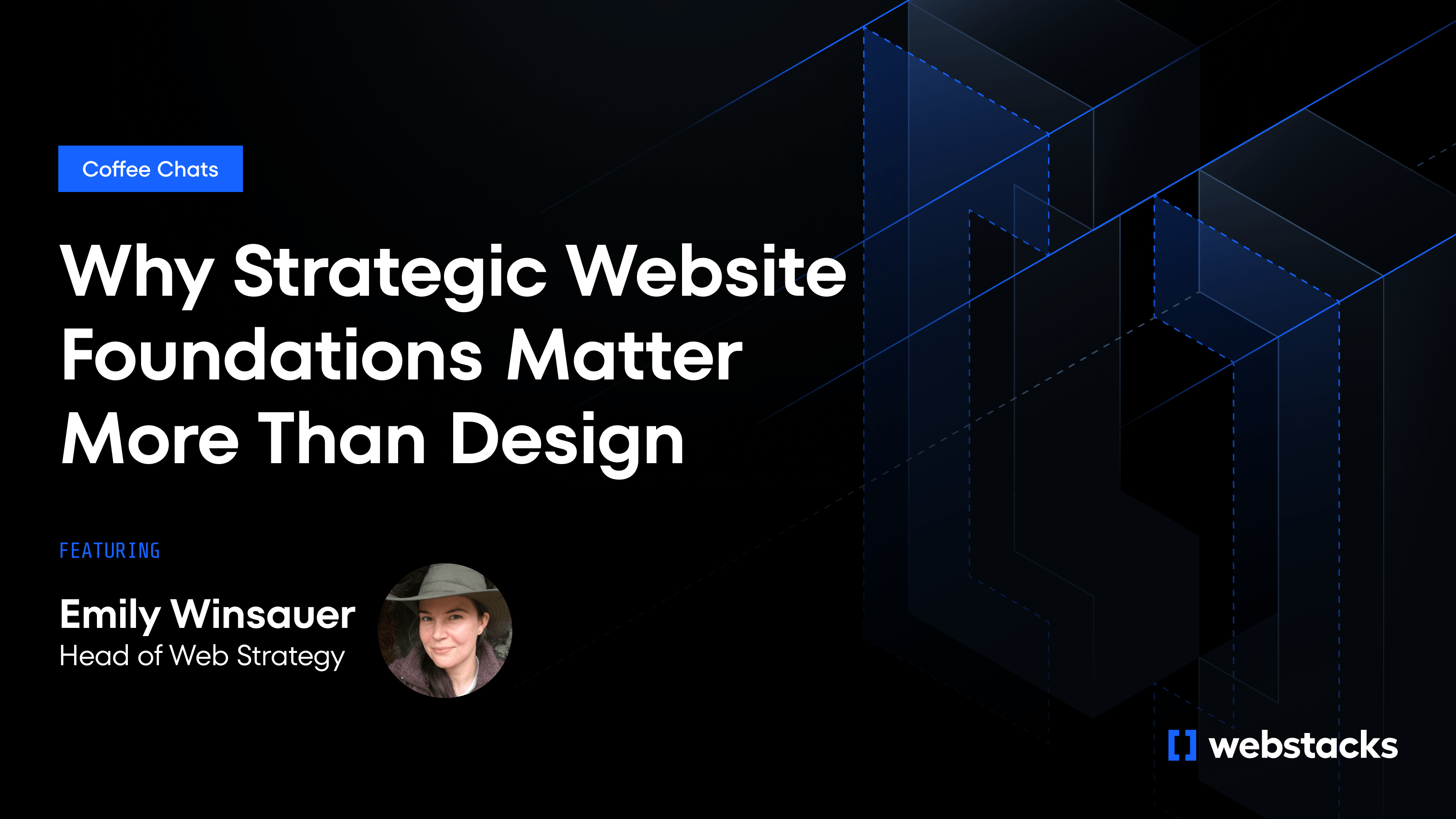You start with one integration, then a co-marketing request, maybe a reseller deal. Suddenly, you’ve got logos on your site, but no leads in the pipeline. Sales isn’t sure what to pitch. Marketing’s waiting on dev tickets just to launch a partner page. And no one’s tracking what’s actually working.
The truth is, most SaaS teams treat partnerships like side projects instead of growth channels. Without a clear strategy and the infrastructure to support it, even the best-fit partners won’t drive results.
This guide will help you fix that. We’ll walk through how to set the right goals, choose partners that align with your ICP, structure co-marketing that drives pipeline, and turn your website into a tool that scales your partner program.

1. Start with a Clear Partnership Objective
Before reaching out to potential partners, get clear on what you’re actually trying to achieve.
Are you trying to generate more qualified leads, speed up expansion into a new segment, or drive product adoption through integrations? Different goals require different types of partnerships and internal setups to support them.
Here are a few common partnership types:
- Tech partnerships: These are integrations with tools your customers already use (think HubSpot, Salesforce, or Slack). Great for driving adoption and retention.
- Channel partnerships: Resellers, referral partners, and VARs that help you reach markets you can’t easily cover yourself.
- Co-marketing partnerships: Joint webinars, blog swaps, gated content, or events that help both sides attract new leads.
Each one works best when it’s tied to a specific business goal. If you're just chasing logos, you’ll end up with partnerships that look good on your site but don’t move the needle.
Let’s say your team wants to enter the mid-market but your sales cycle is slow. A channel partnership with a provider already working with that segment could open doors faster than your outbound team ever could.
2. Identify the Right Partners Based on ICP Fit
Big names don’t always make good partners. What matters is alignment, especially with your ideal customer profile (ICP).
Start by asking: Does this partner help us reach the people we’re trying to serve? If not, it’s probably not worth the effort. The best partnerships grow from shared users, complementary products, and a go-to-market model that fits yours.
Look for partners that bring:
- An audience overlap with your target segments
- A product that solves adjacent problems without competing
- Clear joint value that benefits both teams
If your SaaS model is product-led, integrations that add utility or reduce friction can drive adoption and stickiness. If you’re sales-led, a partner with strong relationships in your segment can shorten sales cycles and add credibility out of the gate.
For example, if your team is building a workflow automation platform and wants to expand into mid-market HR. Instead of standing up a full outbound strategy, you could partner with an HRIS provider that already has traction in that space. It gives you a faster path to the right buyers without starting from scratch.
3. Build the Infrastructure to Support Partnerships
A good partnership runs on clear processes, shared assets, and internal alignment.
If sales doesn’t know how to talk about the partnership or if marketing has nowhere to send leads, momentum stalls fast. That’s why it’s important to treat partnerships like product launches. You need the right setup behind the scenes.
At a minimum, that means:
- A shared system for tracking partner-influenced leads and deals
- Messaging that sales, marketing, and CS teams can use consistently
- Co-branded assets like one-pagers, integration pages, or demo videos
- A process for onboarding new partners quickly and reliably
This is where many SaaS teams feel friction. Maybe the CMS is hard to update, or every new partner page requires dev work. That’s a sign the infrastructure isn’t keeping up.
This is where Webstacks can help you. If you’re scaling your partner ecosystem, you’ll need a site that makes it easy to launch pages, add integrations, and give partners visibility. We help SaaS teams build flexible systems that marketing can actually run, without waiting on engineering.

4. Create Co-Marketing Plans That Drive Results
Co-marketing is often reduced to a logo swap or a quick blog post, and then nothing happens. If you want results, you need a shared plan, clear ownership, and content that gets in front of buyers.
Strong co-marketing promotes the partnership and creates demand for both sides.
That might look like:
- A gated report promoted to both email lists
- A webinar tailored to a shared persona
- Joint paid campaigns with clear attribution
- Landing pages or use cases that explain the integration
If it’s not generating leads, reinforcing positioning, or supporting sales conversations, it’s just noise.
For example, you and your partner are both trying to reach RevOps leaders at Series B+ SaaS companies. You co-create a report on data silos in go-to-market teams, then run a LinkedIn campaign targeting decision-makers in your overlap accounts. That’s co-marketing with intent.
5. Use Your Website as a Hub for Partnerships
If a partner helps drive value but there’s no place to feature them, you’re missing a big opportunity. Your website should make it easy for prospects to discover, understand, and act on your partnerships.
That means:
- A central partner or integrations page that’s easy to browse
- Individual pages that explain the joint value and use cases
- Clear CTAs—whether it’s to connect accounts, schedule a demo, or learn more
These pages support sales conversations, improve onboarding, and boost SEO for long-tail terms like [your product] + [partner tool].
For example, when Calendly outgrew its existing setup, Webstacks helped rebuild their site on a modular Next.js framework. That gave their marketing team control to publish faster, including pages for solutions, use cases, and partner content
If you're scaling your partnership program, you need a system that grows with it. Webstacks builds flexible sites that let marketers move fast—no dev tickets required.
6. Measure, Iterate, and Scale What Works
Not every partnership will be a win, and that’s fine. What matters is knowing which ones actually drive results and building a repeatable system around them.
Start by tracking:
- Leads and deals influenced by each partner
- Performance of co-marketing campaigns
- Retention or expansion impact tied to integrations
- How often sales references or closes with partner support
Use this data to prioritize. Double down on the partnerships that move pipeline or improve product stickiness. Drop the ones that stall out.
Remember that partnerships need the same level of attention and iteration as any other growth channel. The difference is that when they work, they scale faster than most.
FAQs About SaaS Partnership Strategy
What makes a SaaS partnership successful?
It works when both sides get something out of it, and there’s a plan to back it up. That means clear goals, shared values, and teams on both sides who know what they’re doing. Without alignment across sales, marketing, and product, even the best-fit partner won’t deliver.
How do you track the impact of a partnership?
Start with the basics: leads, pipeline, closed revenue. Then, look at the softer signals, such as how often sales uses the partner in pitches or how many customers activate an integration. If it moves deals forward or keeps users around longer, it’s worth investing in.
How do you know your team is ready to support partnerships?
If marketing struggles to launch new pages or sales doesn’t have a clear message for partners, you’re not ready yet. Partnerships need support through content, process, and visibility. Start small, build the system, then scale.
Partnerships Scale Faster When Your Systems Do
A solid SaaS partnership strategy is built on alignment between your goals, your partners, and the infrastructure that supports them.
When the strategy is clear and the systems are built to scale, partnerships stop being side projects and become growth channels.
If your team is ramping up partnerships but still waiting on devs to launch content or build integration pages, it might be time to rethink how your site supports growth. Webstacks helps SaaS companies turn websites into platforms that support co-marketing, partner content, and fast iteration from day one.




